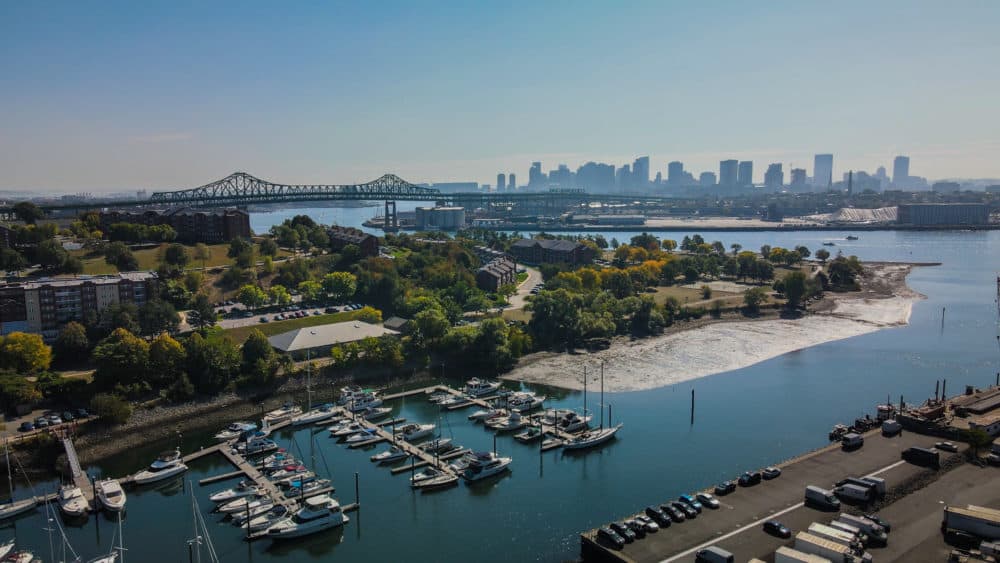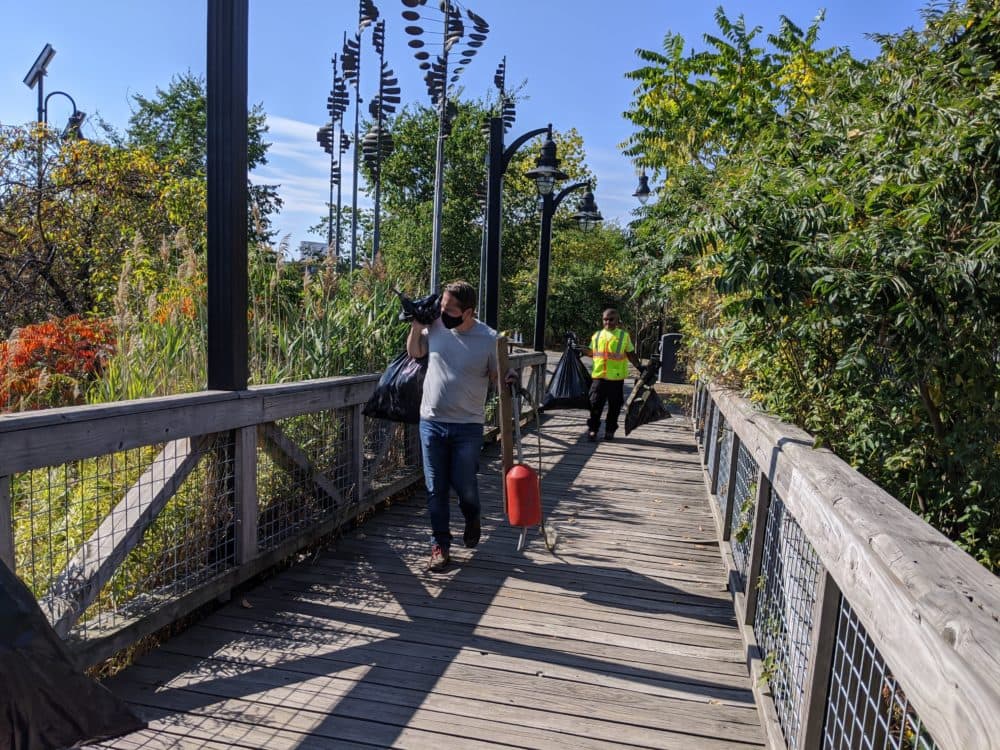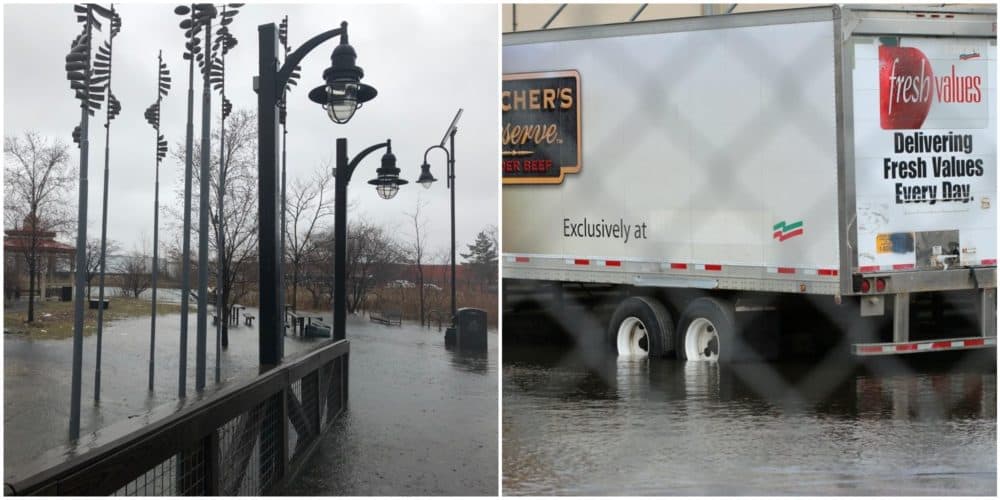Advertisement
Commentary
Chelsea Residents Already Fight For Clean Air, Green Space — And Now, Protection From Rising Seas

“When we fight, we win!”
At almost any protest, that’s a common chant; but in environmental justice communities, it’s a daily mantra. Fresh air, clean water and healthy green space are commonplace in many communities, but not for most low-income communities and communities of color. For places like Chelsea, East Boston, Lawrence, Roxbury and so many others, fighting — through protest, letter writing, meeting with decision makers, pro bono lawsuits and more — is the only way to stop the siting of more toxic facilities. It’s the only way to gain a sliver of open space or a breath of fresh air.
Now, with the worst effects of climate change imminent, Chelsea residents are facing another fight --- sea level rise and extreme weather events with severe flooding.
Chelsea, the smallest city in Massachusetts and one of the most densely populated, has carried disproportionate environmental and public health burdens for decades. The city is surrounded by water on three sides — by Island End River, Mill Creek, Chelsea Creek and the Mystic River — but no one who lives here considers it a waterfront town. Until recently, you couldn’t get close to much of the 2-mile long waterfront or even see the water, save for traveling over the three bridges that cross our waterways. Parcel by parcel, activists have and continue to fight for public access to a waterfront that has been dominated by industry for decades.
There is one place, however, tucked in between the New England Produce Center and Island End River, where residents have fought and won. Fifteen years ago, Chelsea residents, organized through GreenRoots, challenged a developer’s Chapter 91 license, a Massachusetts permit long meant to protect the public’s access to what were once public tidelands. Through that appeal, they won access to the river through trellised walkways, wood boardwalks with lighting, an easement to connect what became a public park and kayaking launches at the Admiral’s Hill Marina. That multiyear fight, with dozens of residents engaged with pro bono lawyers and multiple strategies, stands as a flagship example of “when we fight, we win!”

The fight continues on today, to connect the entirety of Chelsea’s waterfront through parks, open spaces and walkways, while prevening more toxic industrial threats from making their home on the water’s edge.
These victories are wonderfully appreciated — and used — by the community. But climate change has called into question how long these hard-fought outcomes will last.
Climate change predictions, using the Boston Harbor flood risk model, determine that 36% of the Chelsea is within a flood risk area. That jumps to 42% in 2030 and 49% in 2070. The boardwalk at the Island End River, that we fought so hard to win, was underwater just a few years ago during the winter storms of 2018. Flood waters came up next to the New England Produce Center, a wholesale produce distribution center serving all of New England and some southern Canadian provinces.

The same waterfront land we won back through the Chapter 91 process is now in a fight against time, nature and displacement. GreenRoots, together with the Mystic River Watershed Association and the Cities of Chelsea and Everett, are working diligently to prioritize the Island End River for resources and action. The climate adaptation strategies we are developing will cost millions of dollars to implement, but they will protect critical infrastructure and prevent our residents from being displaced through climate migration.
Most, if not all, of the eastern seaboard is experiencing climate change impacts from sea level rise and flooding. Yet in Chelsea, these impacts feel more threatening, more pervasive.
Before the pandemic, 24% of Chelsea residents fell below the federal poverty level. It’s almost certainly more now (Chelsea families owed more than $10 million in back rent and mortgage payments). When (not if) extreme weather comes, Chelsea families will be far less likely than wealthier communities to rebound from major damage to their homes and to their places of employment. Without stable incomes, extensive savings and home insurance, Chelsea families' chances of ever rebounding are practically nil. A lifetime of working, saving and struggling could be lost in a single storm surge. Members of my community will be driven from their homes, their neighborhoods, the waterfronts that they worked so hard to gain access to.
Without stable incomes, extensive savings and home insurance, Chelsea families' chances of ever rebounding are practically nil.
In addition, the New England Produce Center, a critical piece of New England’s economy and home to over 1,000 jobs for local people, could find itself underwater and halted for days. Market Basket, where hundreds of Chelsea residents are employed and where thousands of shoppers from outside of Chelsea come for their groceries, also sits in a potential flood zone. As does the MGH Chelsea Health Center. The rising waters won’t maneuver around major industries, like the two large petroleum storage terminals in Chelsea along the Creek. The health and environmental risks posed by breached tanks as a result of climate change are daunting.
The world has seen the impacts of Hurricane Katrina and Super Storm Sandy. Chelsea families know the wrath of Hurricane Maria on Puerto Rico. COVID-19 demonstrated what a lack of investment, a lack of prioritization, looks like in low-income communities and communities of color.
As Chelsea, and communities like ours, regain our strength after the devastation caused by the pandemic, we are reminded that we must continue to fight, every day. We will fight the oppressive systems that put us at an increased risk for climate and public health risks. We will fight for resources to implement climate adaptation. We will fight to ensure our residents are stably housed. We will fight for our community, for our livelihood, for our lives.
We hope that the wins go far beyond 2030 and 2070.
